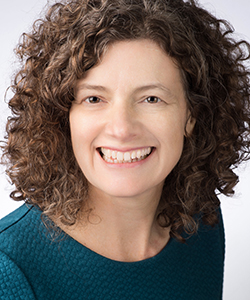We use a lot of jargon and shorthand in education, just as other professions do. Our shorthand helps us move quickly through conversations, establishing that we have a shared understanding of an important idea and allowing us to get on to real work.
The danger of using this secret code, though, is that maybe we don’t really have a shared understanding of an important idea. Maybe we just think we do and base subsequent interactions on that assumption. Sometimes we waste valuable resources because we each had very different ideas.
Learning Forward is just as guilty of using secret code. We even put code words on the cover of our bimonthly magazine, JSD. To make sure we’re clear on the assumptions that underlie the code, I’d like to expand on some of the terms we use throughout the August issue. The theme for the issue is “How We Connect: The Many Ways We Network and Learn.”
Collaboration
Learning Forward believes that collaborative learning is among the most powerful ways that educators can understand and address their most pressing student learning challenges. However, collaboration — the act of coming together around a shared task or common goal — doesn’t in itself constitute learning.
Collaboration leads to learning when colleagues state an intention to gain new knowledge, skills, attitudes, practices, or beliefs. Collaboration without such a stated intention may also lead to learning and to great solutions. However, if the stated purpose of collaboration is learning, educators are much more likely to set and achieve meaningful goals.
Communities
As anyone who has participated in a PLC without a plan knows, gathering a group of people and calling it a team or community or task force doesn’t constitute learning.
Yet communities can be among the most powerful forums for learning. Communities of practice that focus on authentic problems and a cycle of inquiry advance their understanding and capacity to serve students. They have protocols and structures that prioritize purposeful learning, and they know whether they are achieving the goals they set.
Networking
Making great connections with new people, gathering business cards, setting up future conversations, identifying common interests and acquaintances — these elements of networking can all lead to positive outcomes. The act of doing those things doesn’t, however, constitute learning. Networking can lead to learning.
As with communities and collaboration, both intentional and incidental learning is a valuable outcome of networking when the conditions are right and participants approach their networking with curiosity and a growth orientation.
There are several other terms I could add to this list. Sharing doesn’t equal learning. Neither do feedback, team time, or technology platforms. While all of these resources and concepts contribute to and enable the most effective forms of professional learning, they are only useful when learners employ them with purpose and are most likely to lead to change with sustained support and effort.
Without such purpose, none of these things — collaboration, communities, networks, time for learning — is likely to contribute to better results for adults and students, and those who invest in these resources will logically withdraw their support.
I hope this contributes to your understanding of how to boost collaboration’s potential. I’m eager to hear how your efforts pay off. Please let me know anytime.
This post is adapted from the August issue of JSD, Learning Forward’s bimonthly member publication.








